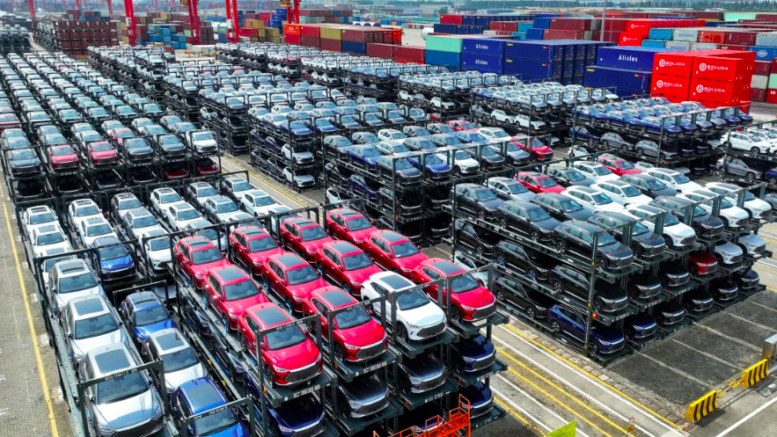China encountered significant economic challenges throughout 2023, with notable declines in key indicators. According to recently released customs data, the country experienced a drop in exports for the first time since 2016, reflecting a 4.6% decrease compared to the previous year. This decline, excluding the automotive sector, was attributed to a slowdown in global demand for Chinese-manufactured goods. The contrast with the preceding year, which saw a 7% increase in exports, underscores the abrupt shift in economic dynamics.
Imports, too, faced a downturn in 2023, falling by 5.5% to $2.56 trillion. Despite the challenging economic environment, China managed to maintain a trade surplus of $823 billion. A spokesperson for the General Administration of Customs, Lyu Daliang, noted that the global economic recovery has been weak, adversely affecting China’s exports. The impact of sluggish external demand has been particularly pronounced, contributing to the overall difficulties faced by the Chinese economy.
The challenges extend beyond trade, as China grapples with deflationary pressures. Consumer price inflation in 2023 reached its lowest point in 14 years, with the consumer price index for December showing a 0.3% decrease compared to the same month in 2022. For the entire year, prices exhibited a mere 0.2% increase over 2022, marking the weakest reading since 2009 when the global recession led to a 0.7% decline in the Consumer Price Index.
A combination of weak demand both domestically and internationally contributes to the dual challenges faced by China’s economy. Despite a slight improvement in December’s consumer inflation gauge compared to November, the overarching trend remains a cause for concern. Factors such as ongoing low core Consumer Price Index inflation and subdued factory-gate prices, indicated by a 2.7% drop in the Producer Price Index for December, add to the complexity of China’s economic landscape.
Looking ahead, there are glimmers of hope amid the economic challenges. December witnessed a 2.3% year-on-year growth in exports, marking the second consecutive month of positive growth. This suggests a potential improvement in the global appetite for Chinese goods, following six consecutive months of export contraction prior to November.
Trade relations with Russia emerged as a bright spot, reaching a record high in 2023 with a 26% increase from the previous year, constituting 4% of China’s total trade. Despite the positive developments, uncertainties persist, and challenges in global demand, coupled with concerns of “protectionism and unilateralism,” are expected to continue impacting China’s export prospects.
The United States, despite remaining China’s largest single-country trading partner, witnessed a decline in its share of total trade in 2023, marking the first fall since 2019 during the U.S.-China trade war. The Association of Southeast Asian Nations (ASEAN) and the European Union collectively accounted for a substantial portion of China’s trade.
One sector that exhibited notable resilience amid the economic challenges was the automobile industry. China experienced a remarkable 69% surge in the total value of automobile exports in 2023, emerging as the highest among all categories. Electric vehicles played a significant role in this growth, with approximately one-third of exported cars being electric passenger vehicles. This highlights the strength and competitiveness of China’s auto industry, which is well-positioned to continue providing innovative products to meet global consumer demands.
While positive developments in certain sectors offer optimism, the broader economic outlook for China in 2024 remains uncertain. The persisting challenges of weak global demand, ongoing property downturn, and deflationary risks underscore the complex landscape that policymakers and businesses will navigate in the coming months.

